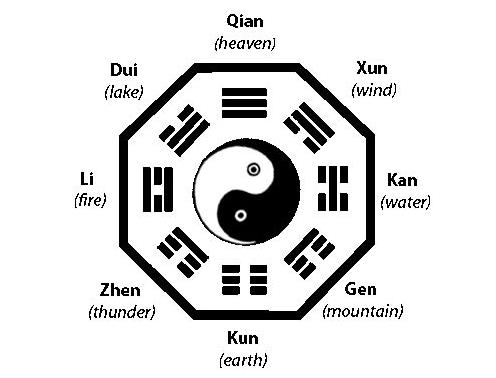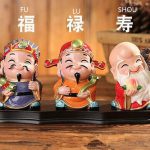The Yi Jing ‘Book of Changes’ is foremost among the five ancient classics of China. Kongfuzi (Confucius) said “If years were added to my life, I would dedicate fifty to study the ‘Yi Jing’, then I might approach perfection” (Analects) . “The Yi Jing thinks of nothing, does nothing; in tranquility, unmoving, it fathoms what is at the back of everything in the world” (Great Appendix to the Yi Jing). Many great scholars have studied the ‘Yi Jing’ (which is still widely known as ‘I Ching’ following the Wade Giles system) as a source of contemplation and reflection. Marcel Granet has described it as “the Cosmos in capsule form”. It served as a broad method for characterizing all things, people, events and situations systematically. As many objects and actions are associated with a particular hexagram it was used as a proto-science – putting everything in its appropriate logical category. In Imperial China its influence was all pervasive. The Qing dynasty Emperor Kangxi’s edition of the I Ching had by 1715 accumulated no less than 218 commentaries written by esteemed scholars. Emperor Kangxi never tired of it, spending over six months studying it – twice – and consulted the book to determine such things as the just punishment of rebels. He considered it of great depth touching on both fortune-telling and morality. His son, the Emperor Yongzheng consulted it widely including when pondering what to do with the case of the traitor Zeng Jing , his Yi Jing consultation gave hexagram 61 ‘Inner Trust’ and he interpreted this to mean he should treat him with leniency.

It is called ‘Book of Changes’ because it is rooted in transformation. In the classic divination method two hexagrams are cast at the same time, the one changing to the other representing past and present or present and future.
Feng Shui, Confucianism and Yin/Yang all contribute to the ‘(Book of Changes ’). Nowadays it is best known as a popular fortune telling system, but its foundations go far deeper. It builds ‘hexagrams’ made up of six lines that are either yang (solid) or yin (broken). The hexagrams are called Guà in Chinese. It can be thought of as a combination of two trigrams stacked on top of each other (a trigram is made up of three lines). These eight trigrams (BaGua) are shown surrounding the traditional taiji (yin-yang) figure in the illustration. Two trigrams combine to give the six lines that represent each of the 64 possible hexagrams. The Book of Changes muses on the meaning when one of the six lines are changed from yin to yang or yang to yin. For more on some of the numerical properties and associations of the trigrams see our Luo Shu (magic square) section.
The Book of Changes is the soul of Eastern thinking and plays a decisive role in traditional Chinese medicine, feng shui, and self-cultivation.




